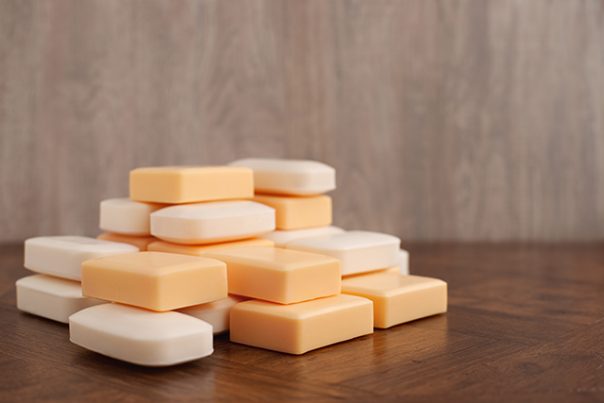
Microcrystalline wax sources, health risks
Tuesday, October 24, 2017 by Frances Bloomfield
http://www.naturalpedia.com/microcrystalline-wax-sources-health-risks.html

Microcrystalline wax is a type of petroleum-based wax derived from the petroleum refining process. Specifically, by de-oiling petrolatum or petroleum jelly. Although similar to paraffin wax, this odorless and off-white material differs in that it has smaller crystals than paraffin wax. The finer crystal structure makes microcrystalline wax more flexible than paraffin wax as well.
This material has numerous properties that have made it popular to use in cosmetics and beauty products. For example, the ability to bind oils and solvents means that microcrystalline wax can prevent the sweating of lipsticks. In addition, microcrystalline wax acts as a water-repelling agent for waterproof mascara, and as a structure formation agent for eyeliner pencils.
Microcrystalline wax is considered to be safe as an ingredient and additive in cosmetics and beauty products. However, there are many risks associated with the handling of microcrystalline wax, so it can be considered a potential occupational hazard.
Harmful effects that can be caused by microcrystalline wax
In its solid form, microcrystalline wax is harmless. Molten microcrystalline wax, however, can be an eye irritant and may even result in thermal burns on contact with the eyes. The vapors coming off of molten microcrystalline wax may irritate the eyes as well and cause them to water.
Similarly, melting microcrystalline wax can turn it into a skin irritant. Repeated exposure can lead to the skin drying out or cracking. Individuals with sensitive skin, skin allergies, and other similar skin disorders are recommended against handling molten microcrystalline wax due to the fact it can cause skin sensitization or even allergic reactions among these people. This is because inadequately cleaning and drying the skin after exposure to microcrystalline wax can cause it to interfere with the body’s ability to moisturize itself.
In addition to irritating the eyes and skin, the vapors of molten microcrystalline wax can cause upper respiratory irritation. This may escalate into breathing difficulties if the affected person is not moved away from the source of exposure and into an area with fresh air. Furthermore, microcrystalline wax is considered to be a stable material overall but can release large amounts of carbon and small amounts of nitrogen and sulfur upon combustion.
Swallowing microcrystalline wax can bring about abdominal discomfort, regardless of the form it was consumed in. Solid microcrystalline wax can be passed out with little issue, though the molten material may cause severe stomach pains if left untreated.
The severity of these health effects will vary greatly, depending on the concentration of microcrystalline wax the person wax exposed to and the length of exposure.
Body systems harmed by microcrystalline wax
If not handled while wearing the appropriate protective equipment or with insufficient care, microcrystalline wax may cause damage to the skin, eyes, digestive, and respiratory systems. Though most of the aforementioned potential health risks are commonly linked with the molten form of microcrystalline wax, even the solid form can harm the digestive system if great quantities of it are ingested.
Where to learn more
Summary
While safe overall, microcrystalline wax can cause some problems for individuals who are involved in handling it. Molten microcrystalline wax may irritate or damage the skin on contact, while the vapors coming from it can harm the eyes and respiratory system. Both the solid and molten forms of microcrystalline wax can lead to digestive problems.
People who suffer from skin disorders or skin sensitivity should handle microcrystalline wax with extreme caution, or not at all.
Sources include:
TruthInAging.com
ProChemicalAndDye.net
ChestnutProducts.co.uk
Tagged Under: Tags: Microcrystalline wax






